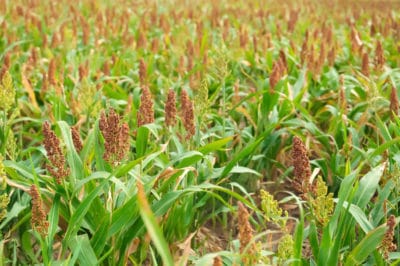House Plants That Resemble Corn
One of the most well-known plants that resemble corn stalk is the Dracaena fragrans massangeana, or more simply, the corn plant.
The Dracaena plant does not produce an actual stalk of corn, nor does it tassel or produce ears. Instead, the leaves look like the leaves of a healthy corn stalk. The plant itself has one thick stem that resembles a tree branch. The leaves typically grow at the top of the stem.
Corn plants are easy to grow and exceptionally hardy, only requiring regular watering and indirect sunlight to thrive.
Tip: Although people plant this variety to enjoy the bright green foliage, you may even get an occasional bloom!
Outdoor Plants That Resemble Corn
There are only a few indoor plants that look like corn, but outdoors is another story! Have you ever wondered where the bristles of your favorite broom come from? The answer is from a plant called broomcorn. Although the plant does not produce leaves that look like corn, the bulk of this plant looks like corn tassels!
Additionally, there is the grain sorghum, which looks like a corn stalk but is much shorter. The top of the plant, called a head, can be yellow, red, or even a striking bronze color.
Millet is also a grain-like plant whose leaves resemble those of a corn plant. If you did not plant millet but find it growing in your yard, it likely comes from seed falling from your bird feeder!
Weeds That Look Like Corn
There are other corn-like plants that you can easily find growing in your garden or lawn, but these are not plants you can get excited about. Instead, they are weeds, and you should eradicate them as quickly as possible. Some of the more noxious varieties include:
- Johnson Grass
- Quackgrass
- Giant Reed
- Crabgrass
If you notice any of these weeds in your garden or lawn, you should employ a reliable method of organic weed control in addition to pulling the plants by hand. Be sure to remove the plants before you notice seed heads appearing, as the seeds spread very quickly.
In short, if you notice anything that looks like corn in an area where corn should not be growing, identify it as soon as possible. By doing so, you may be able to prevent weeds from overtaking your land.
